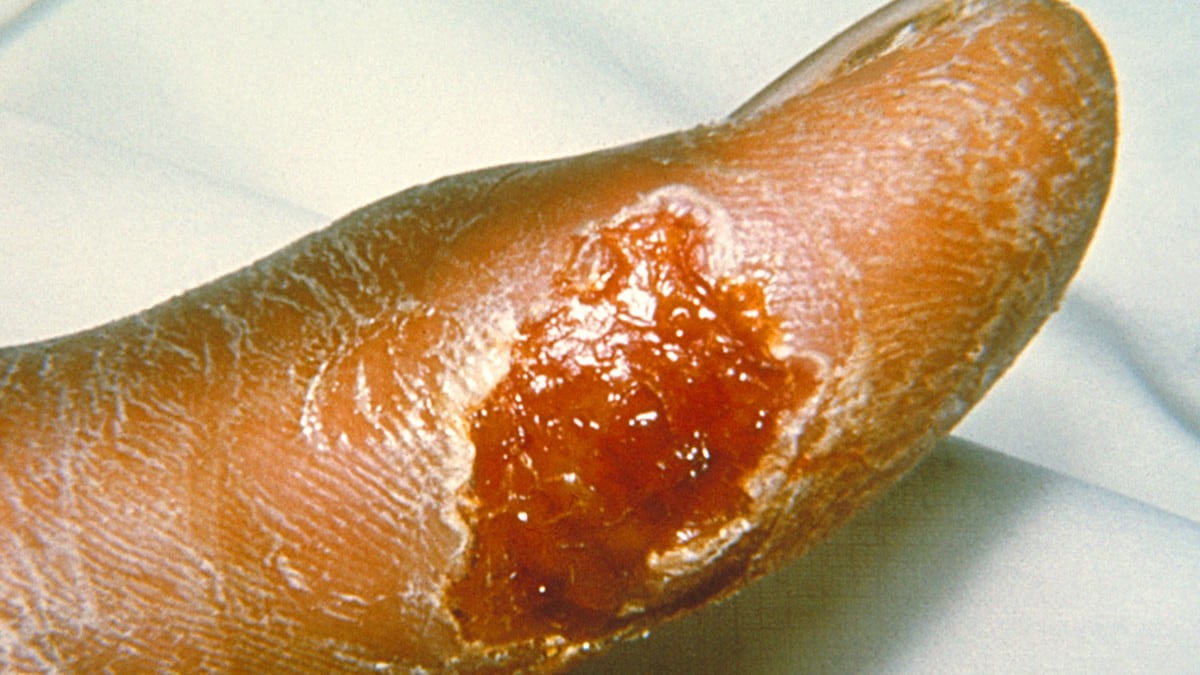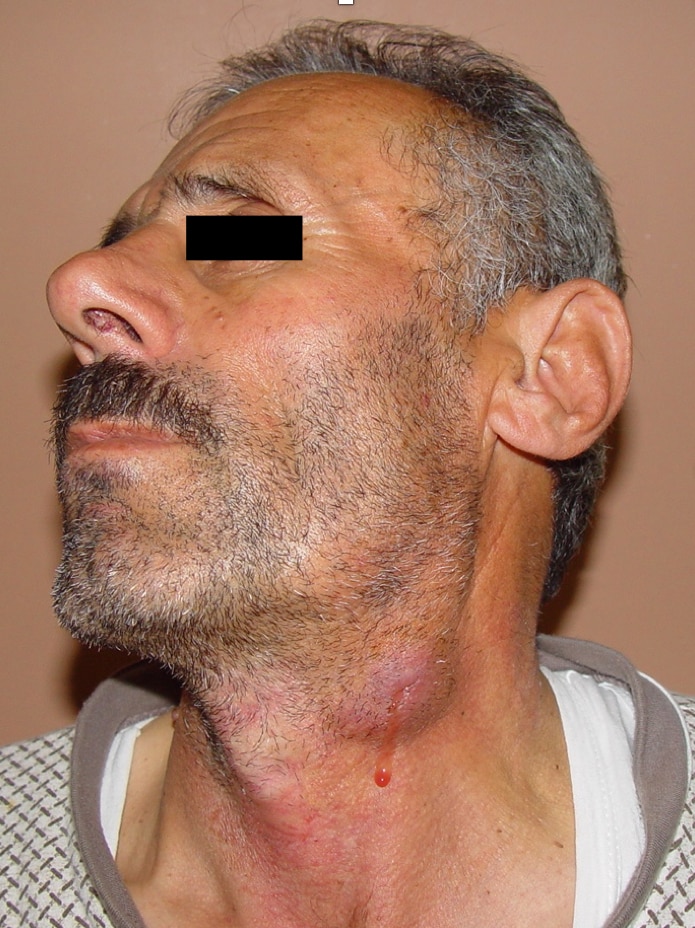Key points
- Tularemia is caused by infection with the bacteria Francisella tularensis.
- Ticks that transmit F. tularensis bacteria to humans include the American dog tick (Dermacentor variabilis), Rocky Mountain wood tick (D. andersoni), and lone star tick (Amblyomma americanum). Note it is NOT transmitted by the same ticks that transmit Borrelia burgdorferi, the agent of Lyme disease.

Signs and symptoms
Incubation period
3–5 days (range 1–21 days)
Generalized signs and symptoms
- Fever, chills
- Headache
- Malaise, fatigue
- Anorexia
- Myalgia
- Chest discomfort, cough
- Sore throat
- Vomiting, diarrhea
- Abdominal pain
Specific presentations
The clinical presentation of tularemia depends on the route of inoculation and other factors.
(Ulcero) Glandular: Usually occurs following a tick or deer fly bite or after handling an infected animal.
- Localized lymphadenopathy
- Cutaneous ulcer at infection site (not always present)

Oculoglandular: Occurs when the bacteria enter through the eye, for example when a person touches their eye after handling infectious material.
- Photophobia
- Excessive lacrimation
- Conjunctivitis
- Preauricular, submandibular and cervical lymphadenopathy

Oropharyngeal: Occurs after eating or drinking contaminated food or water.
- Severe throat pain
- Exudative pharyngitis or tonsillitis
- Cervical, preparotid, and/or retropharyngeal lymphadenopathy
Pneumonic: Occurs after breathing dusts or aerosols containing the bacteria or secondary to other untreated forms of tularemia.
- Cough (dry or productive)
- Substernal tightness
- Pleuritic chest pain
- Hilar adenopathy, infiltrate, or pleural effusion may be present on chest imaging
Typhoidal:
- Characterized by any combination of the general symptoms, without localizing symptoms of other specific presentations
- Centers for Disease Control and Prevention. Tularemia—United States, 2001-2010. MMWR 62(47): 963–966.
- Dennis D, Inglesby TV, Henderson DA, et al. Tularemia as a biological weapon: medical and public health management. JAMA 2001. 285(21): 2763–2773.
- Dietrich EA and Petersen JM: Francisella. In: Carroll KC, Pfaller MA, Landry ML, et al, eds. Manual of Clinical Microbiology. 12th ed. 2019. ASM Press, Washington DC.
- Nigrovic LE, Wingerter SL. Tularemia. Infect Dis Clin North Am. 2008;22(3):489-504.
- Penn RL. Francisella tularensis (Tularemia). In: Mandell GL, Bennett JE, Dolin R, editors. Mandell, Douglas, and Bennett's Principles and Practice of Infectious Diseases. 8th ed. Philadelphia, PA:Elsevier/Saunders; 2015. p. 2590–2602.
- Feldman KA, Enscore RE, Lathrop SL, et al. An outbreak of primary pneumonic tularemia on Martha's Vineyard. NEJM 2001; 345: 1601–1606.
- World Health Organization. (2007). WHO Guidelines on tularaemia. World Health Organization. https://iris.who.int/handle/10665/43793
